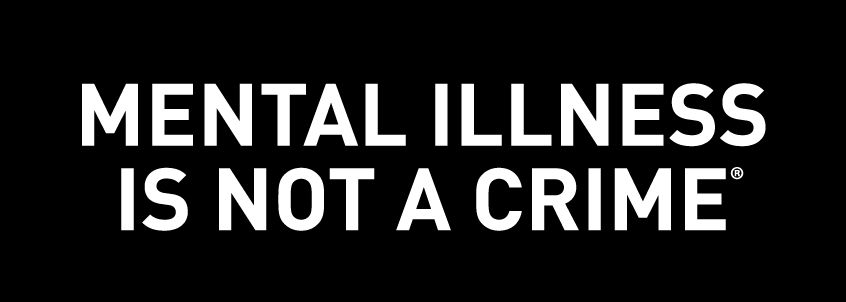Decriminalize Mental Illness

Having a mental illness is not a criminal offense. Yet far too many individuals receive their first diagnosis of mental illness in jail or prison — a result of stigma, discrimination, racism, as well as the persistent and systemic failure of the U.S. healthcare system to provide affordable, accessible, community-based mental healthcare.
Despite how ill-suited carceral settings are for providing mental health services, prisons and jails are the nation’s largest de facto mental healthcare providers.1 In fact, the nation’s three largest mental healthcare providers are: The Twin Towers Jail in Los Angeles County, Cook County Jail in Chicago, and New York City’s Rikers Island Prison Complex. Moreover, people with psychiatric diseases like schizophrenia and bipolar disorder are 10 times more likely to be in jail or prison than in community-based care.2
In addition, 70% of young people in youth detention centers have a diagnosable mental health condition3, and over three-quarters of incarcerated women (76%) have some indication of a past or current mental health problem — significantly higher rates than among men. Yet jails and prisons are not built, financed, or structured to provide mental healthcare services.
For all of us, this criminalization of mental illness has wide-ranging and devastating consequences. Mental health is health, and people with mental illness deserve care, not incarceration.
We can and must do better.
The history of the criminalization of mental illness is one we consider at the Sozosei Foundation in order to inform and design a future that ensures equitable access to evidence-based mental healthcare for all people in communities across the nation.
To learn along with us, we welcome you to view some of the past conversations we have hosted on the history of criminalization, including:
- A Brief History of the Criminalization of Mental Illness (read the report here);
- Knowledge is Power: Using the History of 911, Legacies of Racism and Discrimination, and Lived Experience to Design for a Better Tomorrow; and
- Hearing Voices: Memoirs from the Margins of Mental Health – This exhibit at The Library Company of Philadelphia examined the history of mental illness in the 19th century and was featured as a site visit during the 2022 Sozosei Summit.
- Mental Illness Is Not a Crime® – This podcast brings together experts from across the United States to discuss how and why we have criminalized mental illness and how we can build a future where mental illness is not a crime.
These activities underscore a broad academic consensus that deinstitutionalization in the 1960s facilitated the criminalization of mental illness, catalyzing a national shift in mental health treatment from state hospitals to community-based treatment, without adequate funding.
By the mid-1980s, it was apparent that something had gone wrong. “The policy that led to the release of most of the nation’s mentally ill patients from the hospital to the community is now widely regarded as a major failure,” declared The New York Times in 1984.4 “States proved more enthusiastic about emptying the old facilities than providing new ones,” the Chicago Tribune noted in 1989.5 “Many patients went from straitjackets to steam grates.”
At the same time, systemic racism, the “war on drugs,” mandatory minimum sentences, three-strike laws, and other “tough on crime” reforms were coming into vogue, facilitating mass incarceration for all people, particularly those representing BIPOC communities and those with mental illness — who quickly got swept into jails and prisons. The convergence of continued divestment6 in spending on mental healthcare coupled with an insurance industry that minimized the need for mental health coverage further drove the criminalization of mental illness.
The Foundation believes an opportunity exists to make measurable progress to decriminalize mental illness by increasing access to mental healthcare in communities in order to eliminate the inappropriate use of jails and prisons for diagnosis and treatment.
Through our Sozosei Summit to Decriminalize Mental Illness and grantmaking, the Foundation is eager to engage in dialogue and work collaboratively to move the needle to decriminalize mental illness in the United States. Mental illness is not a crime.
1NAMI – Criminalization of People with Mental Illness
2Treatment Advocacy Center – Serious Mental Illness (SMI) Prevalence in Jails and Prisons
3NAMI – Mental Health By the Numbers | NAMI: National Alliance on Mental Illness
4 How Did Release of Mental Patients Begin? Richard D. Lyons, The New York Times, Oct. 30, 1984
6 The Great Recession accelerated the nation’s downward trend in mental health spending. Between 2009 and 2012, America’s 50 state legislatures cut a total of nearly $4.5 billion in services for people with mental illness, even as patient intakes increased by nearly 10 percent during the height of the economic crisis. America's Largest Mental Hospital is a Jail, Matt Ford, The Atlantic, June 8, 2015.